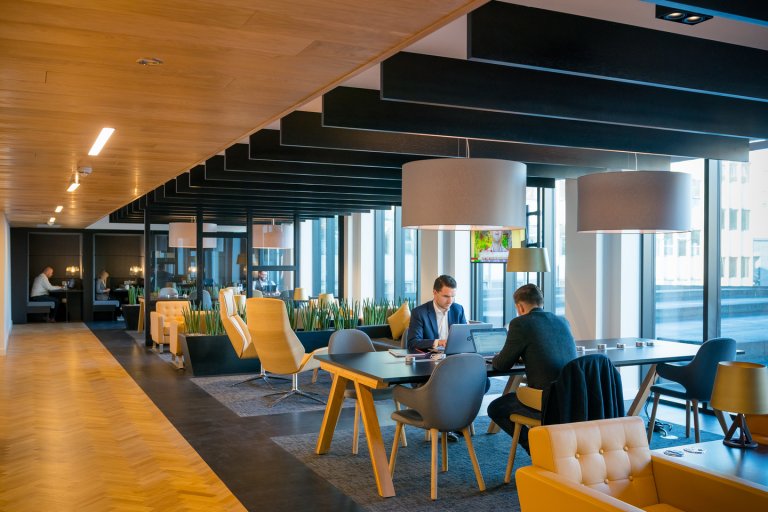
Architects have driven the green agenda in the built environment for decades – BREEAM is nearly 30 years old – seemingly comfortable in our role at the forefront of sustainable innovation. But whilst we naturally accept our projects must meet deliver sustainable outcomes for our clients, as a profession we’ve not fully engaged with the conversation about how buildings can actively support human health, or impact negatively upon it. 2018 is set to see that change.
Wellness in architecture has grown emerged naturally out of the green trend, shifting the focus beyond environmental health impacts to those which affect human health and wellbeing. Our built environments have the capacity to elevate and enhance our physical, mental, social, occupational and emotional wellbeing. In doing so, this can provide innumerate benefits to building owners, users and the wider public. This is achieved by ensuring the design and materiality of our spaces support movement, access to light, clean air and visual stimulation. Whilst certain sectors – the hotel industry, as an example – have been taking note of the wellness trend for some time, other sectors have lagged behind, despite the quantifiable benefits for clients. Architects are best-placed to drive this agenda.

The WellBuilding Standard, the wellness equivalent of BREEAM, splits the task of designing for wellbeing in to 8 ‘concepts’ – air, water, light, nourishment, fitness, comfort, mind and innovation. Within each are a number of credits covering the specification of services, the functional and aesthetic design of spaces, even through to the client / end-users future management of the building and its inhabitants. To follow these principles requires not just a rigorous buy-in from the design team, but a willing client also.
Specifying low-VOC products, maximising natural light and including water and air quality monitoring systems provide clear benefits which require little in the way of a ‘hard sell to a client’. Some of the more abstract concepts and principles with cost or programme-impacts require a more open-minded approach. The fitness requirement, for example, gives credits for buildings which encourage the use of stairs, but also for projects which incorporate spaces for exercise within their brief. To the client, giving over valuable floorspace to a yoga studio may seem commercially questionable! However, wellness in architecture requires us to think about buildings beyond their constructional value as active contributors to human health. A healthy workforce is a more productive one. Clear explanation of the links between employee wellness and productivity and profit are critical to supporting our clients in making the right choices for their projects. Discussion of wellness ambitions should start at Stage 0.

The WellBuilding Standard is well-established in the United States, but gaining traction and attention here. Services engineer Cundall’s innovative offices in St Pauls were the first project in Europe to gain Well Certification. The workplace balances thoughtful design (by architects Studio Ben Allen) with a robust approach to wellness in the servicing and management of the space. Occupants are greeted by sculptural trellises satisfying the biophilia credit by replicating the natural structures of foliage. Plants feature throughout; materials are low in volatile compounds, furniture encourages moving and standing. Post-occupancy evaluation and employee review has revealed a significant impact on employee performance and a reduction in absenteeism. And – critically – none of this impacts upon the architecture of the space; it enhances it.
In our work at DLG, we are seeing a push toward healthier environments; in the retail sector, there is greater demand for health and fitness facilities, naturally requiring architecture which supports the good intentions of occupants. In the workplace sector, the wellness agenda is of increasing significance; our client, Bruntwood, in particular has recognised the incredible value of stimulating environments in the co-working sector. Our project together at the Platform, Leeds, includes the UK’s largest mural (the incredible Athena Rising by Nomad Clan) and is creating opportunities for art installations on the site through partnerships with local artists and institutions. The benefits of this are felt not just by occupants, but by the city.
Architects should be leading from the front. We are fortunate enough that our place in the process of design has been given a welcome boost by London Mayor Sadiq Khan, whose draft London Plan (published November 2017) sticks architects firmly at the centre of improving the city’s built environment. But whilst the draft document speaks ambitiously of embedding design quality, it falls short of addressing the growing drive toward environments that improve our physical and mental health, combats isolation and supports social and societal wellbeing. Working with our clients to understand the tangible benefits of this approach and the appropriate level of response on a project-by-project basis is critical if architects are to stay ahead of the curve.

